Why Fish Make Sad Classroom ‘Pets’
I’ll never forget walking into my history classroom in middle school and seeing the grim, serious look on my teacher’s face as he stood next to the fish bowl that sat near his desk. Once everyone shuffled in and took their seats, he cleared his throat and announced to the class that someone—a student—had poured bleach into the fish bowl, killing the fish inside. Everyone was quiet, and I was confused. I’d barely noticed those fish in the classroom anyway—why would someone hurt them? Some students began to giggle, clearly not grasping why this was such a serious matter. Looking back, I also wonder: Why were they there to begin with? A classroom full of rotating groups of dozens of boisterous adolescents is no place for animals. And a bowl isn’t an appropriate home for goldfish, as it doesn’t provide the space or oxygen that they need.
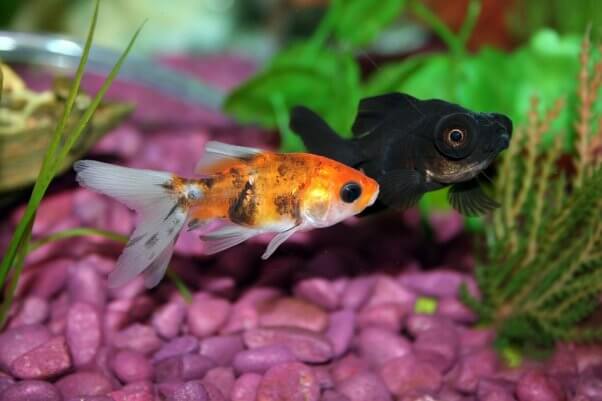
Most fish in classrooms aren’t receiving proper care or living in proper conditions—and they’re also at risk of cruelty. The following are reasons why teachers should never bring fish into their classrooms:
They suffer there.
Fish are popular classroom animals for all the wrong reasons, as they’re not at all suited to that setting. TeachKind has been alerted to numerous instances of fish suffering in the classroom—including one in which a biology teacher allowed students to put incompatible betta fish in the same tank to watch them fight. (They were then sent home with “anyone who wanted them.”). We also learned of a betta fish who died in a preschool classroom because the teacher didn’t know enough about the animal to realize that he or she was diseased, and we’ve heard many other anecdotes about fish who have died of everything from neglect and low temperatures to abuse from students. Depending on the animal, it can also be difficult to transport them safely during weekends or school breaks—but leaving them alone in a classroom should never be an option, as they are sensitive to temperature changes, need to be fed and cared for, and can fall ill.
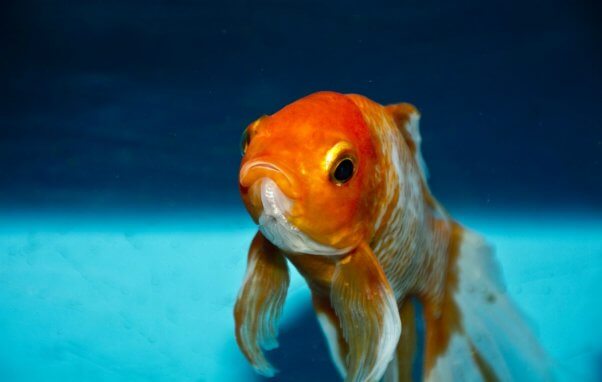
They DO feel pain.
Fish have complex nervous systems and react to painful stimuli in the same way that all animals do—their breathing rate increases, their muscles contract, and they try to escape. Dr. Donald Broom, scientific adviser to the British government, states that anatomically, physiologically, and biologically, the nervous system (which interprets pain signals) in fish is virtually the same as in mammals. Since these animals can suffer, it’s unacceptable to treat them as if they were classroom tools or trinkets.
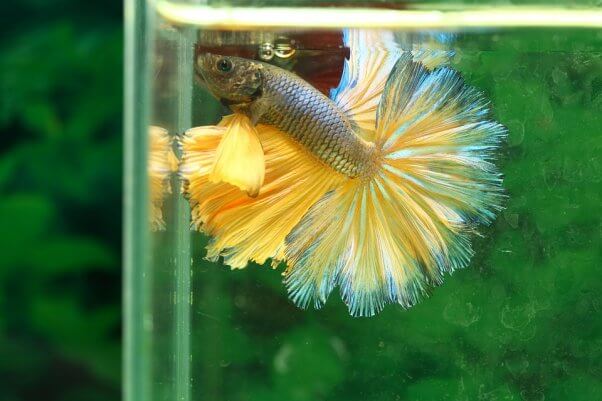
Just because some fish are sold inexpensively doesn’t mean that their lives aren’t valuable.
Fish are intelligent social animals who feel pain and can suffer—but all too often, teachers choose them as classroom “pets” because they’re relatively inexpensive to purchase and because they’ve received misleading information that fish are low-maintenance animals. Sadly, this often means that teachers feel as though they don’t need to pay attention to or care for them the way that they might for other animals because they view them as easily replaceable. But this attitude is unacceptable, unethical, and almost always results in neglect, causing these living beings to suffer every day.
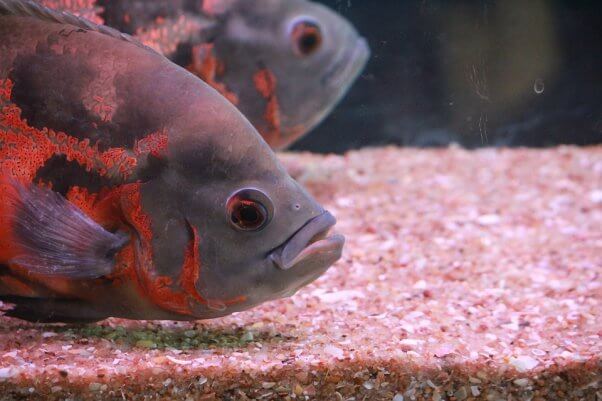
They’re social animals who suffer in artificial tanks.
Fish communicate with one another through a range of low-frequency sounds—from buzzes and clicks to yelps and sobs. These sounds, which humans can hear only with the use of special instruments, communicate emotional states, such as alarm or delight and also help with courtship. The pumps and filters necessary to keep fish healthy in many home aquariums can interfere with this communication. “[A]t the least, we’re disrupting their communication; at worst, we’re driving them bonkers,” says ichthyologist Phillip Lobel.
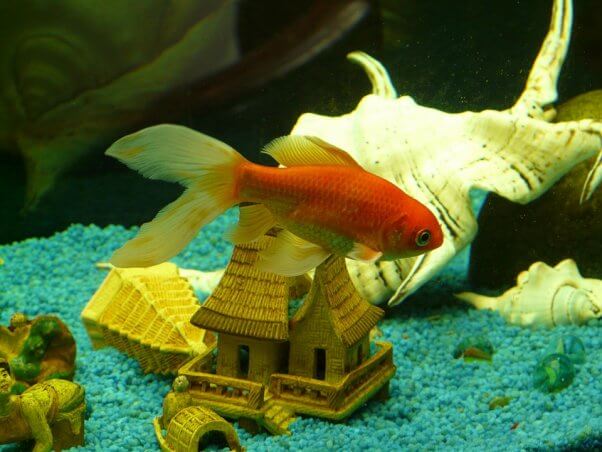
Many “pet” fish were probably stolen from their homes in the wild.
An estimated 95 percent of saltwater fish sold in pet shops come from the wild—mostly from the waters around Fiji, Indonesia, the Philippines, and other Pacific islands. The popularity of keeping tropical fish has created a virtually unregulated industry that catches and breeds as many of them as possible, with little regard for the animals themselves.

Buying tropical fish can contribute to the destruction of coral reefs.
Collectors douse the coral reefs with cyanide, which is ingested by the fish who live there, and as reported in Scientific American, “The resulting asphyxiation stuns some fish and sends others into spasms, making them easy to grab by hand or net.” Half the affected fish die on the reef, and 40 percent of those who survive the initial poisoning die before they reach an aquarium. Cyanide also kills the coral reefs themselves, and marine biologists rank it as one of the biggest dangers in Southeast Asian waters.
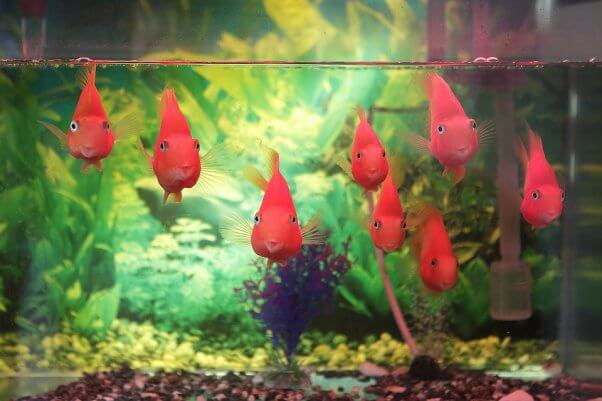
When you buy tropical fish, you could also be contributing to the extinction of a species.
More than 20 million fish are captured every year to support a $300 million worldwide “hobby.” Some species, such as the Banggai cardinalfish, have become endangered because of overfishing—which is done to satisfy the aquarium industry. Classrooms should be working to end species extinction, not contributing to it.
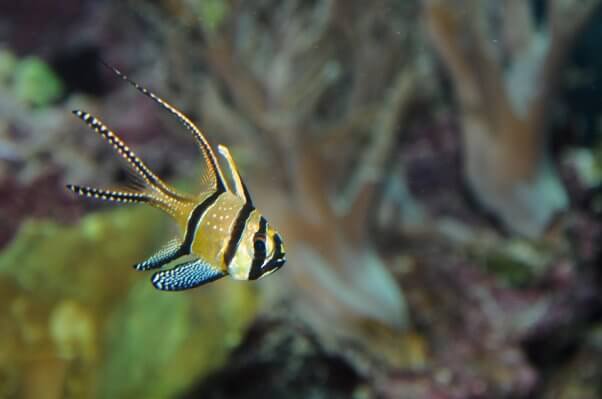
Buying freshwater fish supports a cruel, greedy industry.
Approximately 90 percent of them are raised on farms. Goldfish, for instance, are usually bred in giant tubs in facilities that produce as many as 250 million fish per year. Tropical fish sales are estimated at $200 million to $300 million a year worldwide—and it’s at the expense of these animals’ well-being.
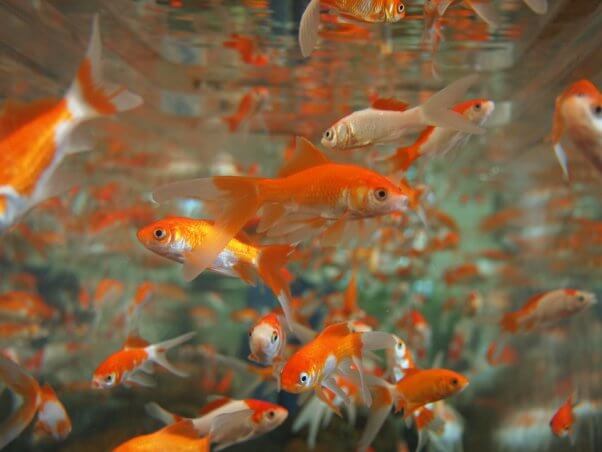
Misconceptions about fish create poor and unfair living conditions for them.
For example, many people believe that betta fish can survive without being fed regularly and without living in a complete ecosystem. Their tanks might consist of nothing more than a vase and a plant, and so they are sentenced to dull, lonely lives and slow deaths by starvation. Pet shops and other stores sell them in tiny cups, bags, or flower vases to consumers who are often uninformed about proper betta care. These tiny containers are not suitable environments for any fish. In nature, betta fish live in shallow, slow-moving streams and rice paddies—in captivity, they require sizable aquariums (a minimum of 2.5 gallons per fish) and temperatures maintained between 76 and 82 degrees.
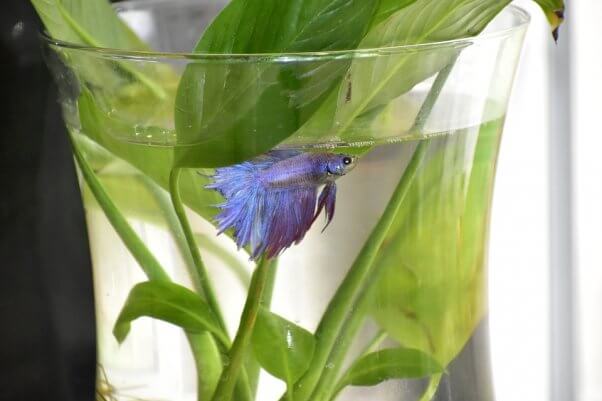
Fish are living beings, not decorations.
Some fish farms are creating breeds that would never occur in nature, treating fish as ornaments instead of living animals. Some breeders even “paint” fish by injecting fluorescent dyes into their bodies or altering their genetic makeups to make them more attractive to buyers. Educators shouldn’t be supporting this kind of industry.
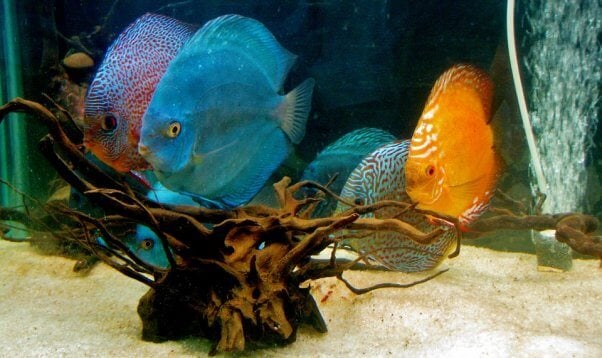
What You Can Do to Help Fish
Please, never keep fish or other animals as classroom “pets.” Like the fish in my seventh-grade classroom and so many others, animals brought into classrooms are at risk of neglect and abuse. A classroom has too many risky variables to ensure the safety of an animal, and there is never an excuse to put a sensitive living being’s life at risk. If your students enjoy watching fish, consider downloading one of the many colorful and realistic fish-themed computer screensavers or “virtual fish tanks” available online. You can also purchase an artificial, fish-free aquarium (like this one or this one) for your classroom if you’d like the effect without putting lives at risk.
If you or someone you know already has aquatic animals, please make sure that they are receiving adequate care. Check that the water temperature is constantly in the proper range during the winter months. Fish in captivity also require a sizable amount of water, climate control and filtration, regular cleaning of aquariums, and ample enrichment. Please read more about the unique and sensitive needs of these animals here.
Want to encourage your students to learn more about fish without keeping animals captive in your classroom? Share these facts along with high-quality video footage—your students will gain a much deeper appreciation for animals than they would by seeing them languish in a classroom tank or bowl:
- Fish are far more intelligent than they get credit for being. Researchers have found that they recognize each other and gather information by eavesdropping. They’re capable of remembering past social interactions that they’ve had with other fish, and they show affection by rubbing against each other. Keeping them in a barren, too-small tank is not only dangerous to their health but also fails to stimulate them and makes them miserable.
- Humans most likely evolved from the ancestors of modern-day fish. Fish are the oldest group of vertebrates, and many of our human features—such as our hinged jaw—come from them. They were the first to have rudimentary teeth, skulls, and spinal cords, approximately 550 million years ago!To think that humans now put these fantastic creatures into tanks and treat them as nothing more than novelties is heartbreaking.
- Fish will surprise you. There are some 30,000 species of fish, which is more than half of all known backboned animals. Some can fly while others can climb trees—and some are even able to change from male to female and back again.
Want to know more? Find out why classroom “pets” are a bad idea all around.





